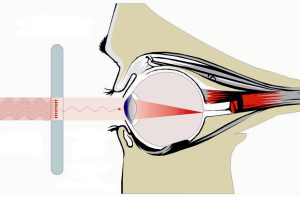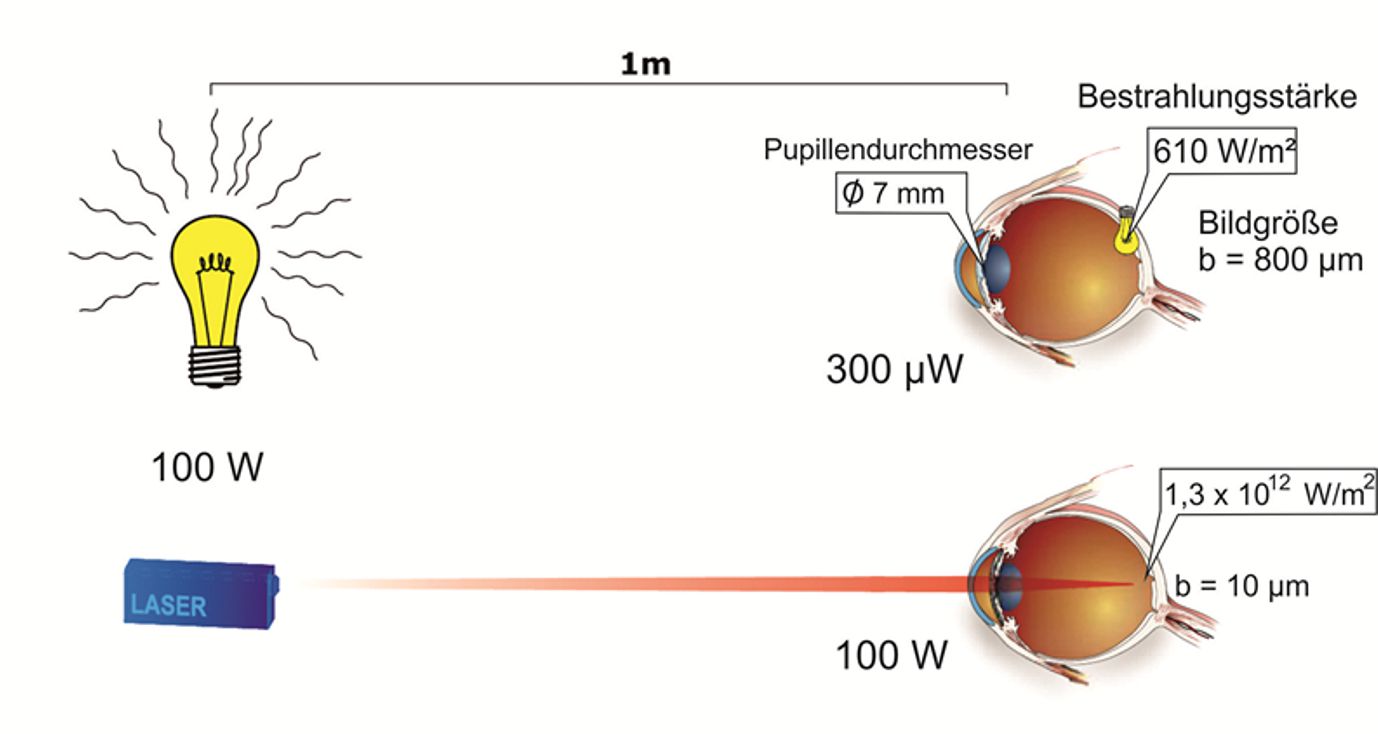
Why is laser radiation dangerous?
The ‘light’ from powerful lasers can be concentrated to power densities (power per area or watts/cm2) that are high enough to evaporate tissue, metal or ceramics. In the medical field laser radiation is used to remove tattoos or to cut human tissue. These examples show a range of applications which require high power lasers and as such there is a high potential risk of accidental illumination of the user. Because the eyes are much more sensitive to light they are at increased risk. In fact, it is possible to cause irreversible ocular injury with just one glance into a direct or reflected laser beam even at lower power output levels.
Physical background
Wave trains of any given laser radiation have a fixed relation to time and space (coherent) and are all of nearly the same wavelength (monochromatic). Laser light can travel over great distances as a nearly parallel beam (collimated). All of this means that the power that can impact an area such as the eye is independent of the distance to the radiation source. Imagine a laser pointer with a beam spot that remains about the same size over great distances. If you compare a thermal source of radiation like a light bulb with a laser you will observe several differences. The light bulb emits light over a very broad spectrum of wavelengths with no specific direction of dispersion. The power of the bulb that may reach the eye decreases with distance because the bulb radiates in all directions (see picture). When comparing a light bulb with a laser, both emitting 1 W optical power, and if there is a 1 meter distance between our eyes and the light source, then the quantity of light coming from the laser would be increased by a factor of 100,000 compared to the light quantity from the bulb (this assumes a normally dilated pupil diameter of 7 mm – i.e. eyes adapted to darkness).

Focussability
In addition to the quantity of light that can hit the eye the high focus ability of the coherent laser light is another danger. While the bulb creates an image on the retina of approximately 100 μm, the laser light is reduced to a spot of just a few micrometers (~ 10 μm) in diameter. A physicist would say that the bulb produces incoherent light. Therefore, the light quantity of a laser that hits the eye is concentrated on a much smaller spot. The power density (power per area or watts/cm2) resulting from this concentration may be sufficiently high, so that any tissue in the focus will be heated up and very quickly destroyed.Since the fovea (responsible for sharp central vision and located on the retina) also has a size of just a few micrometers, it is possible to lose one’s eyesight by one single laser pulse.
